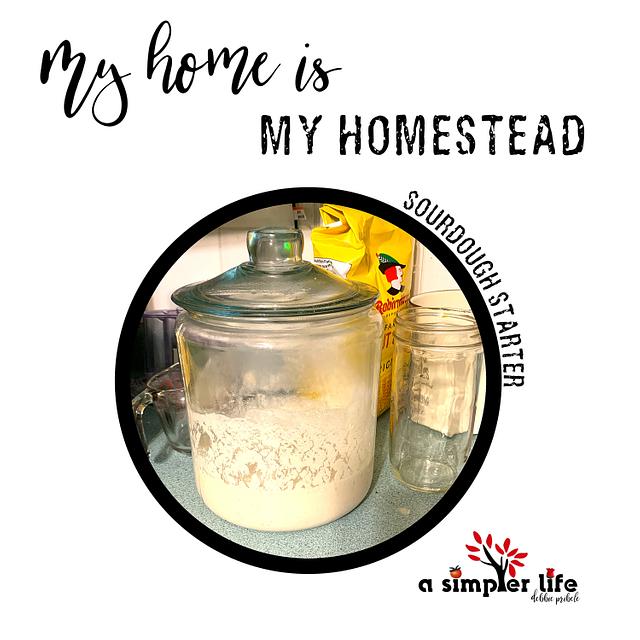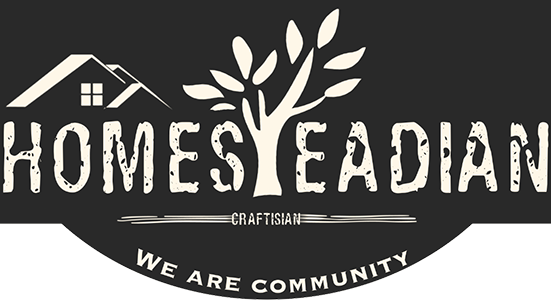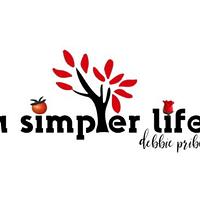Share your homesteading projects
Make new homesteading friends
Ask homesteading questions
Blog your homesteading journey

Debbie Pribele
441 posts
and
19 followers
in over 2 years
in over 2 years
More from Debbie Pribele
Project “Sourdough Starter, Discard, & Bread”

My goal is to make bread, using a long ferment method, in the hopes of being able to eat a bread that my stomach can digest easily.
I am hopeful.
Now, I’m not a perfectionist and I’m not into measuring things exactly (to be honest, I’m really not into measuring at all) and that’s ok - when it works.
My mom has often shared that my great-aunt Ettie used to make the most delicious cakes by tossing in a handful of this, a pinch of that, a scoop of the other thing, and a dash of the other-other thing. No measuring. She just “knew” by the look of things.
Of course, that knowing came from experience and failures but, in the end, she made those delicious cakes.
I’m crossing my fingers that my “knowing” will come through with this starter and I will end up with something that will create the most beautiful breads. We will see. First step: a healthy starter.
I am hopeful.
Now, I’m not a perfectionist and I’m not into measuring things exactly (to be honest, I’m really not into measuring at all) and that’s ok - when it works.
My mom has often shared that my great-aunt Ettie used to make the most delicious cakes by tossing in a handful of this, a pinch of that, a scoop of the other thing, and a dash of the other-other thing. No measuring. She just “knew” by the look of things.
Of course, that knowing came from experience and failures but, in the end, she made those delicious cakes.
I’m crossing my fingers that my “knowing” will come through with this starter and I will end up with something that will create the most beautiful breads. We will see. First step: a healthy starter.
Healthy Sourdough Starters
From all of my research, the key to a healthy sourdough starter is keeping it fed when it is growing.
What does that mean?
Well, it seems that the starter microbes will eat their weight in flour. So, if you have “this” amount of starter, you need to feed it this amount of flour and this amount of water to keep it at a “pancake batter” consistency.
Note: but that is just one method! There are wetter and dryer options
Now, if you keep the starter in a cooler temperature, it gets sleepy and doesn’t eat much. If you keep it in a warmer temperature (I think the optimum is around 80F) then it is active and hungry! (Tip: use your fridge strategically)
What does that mean?
Well, it seems that the starter microbes will eat their weight in flour. So, if you have “this” amount of starter, you need to feed it this amount of flour and this amount of water to keep it at a “pancake batter” consistency.
Note: but that is just one method! There are wetter and dryer options
Now, if you keep the starter in a cooler temperature, it gets sleepy and doesn’t eat much. If you keep it in a warmer temperature (I think the optimum is around 80F) then it is active and hungry! (Tip: use your fridge strategically)
This Starter Experiment
For this starter, I began with equal parts of flour and water, stirred it, and let it sit on the counter.
I used just plain white flour because that’s what I had. Apparently a whole wheat or rye flour is better to start with and, then, maybe feed it with the white flour.
Day 2: fed it with the “equal amount” strategy
Day 3: I had a lot of starter, so I took out most of it and then fed it.
This process is continued for about a week, until you have a beautiful, bubbly, active sourdough starter.
Today, is Day 3 and I have some discard, as they call it, and I’m going to try and make something with it. Is it healthy enough yet to be something other than flour goo? I won’t know until I try. That’s the experience part of homesteading.
This week, I’ve been busy with appointments for my mom but tomorrow is a day off. I wonder if the starter will be ready to use? Probably not … but maybe if I put it in a warmer location? It’s pretty cool here in Ontario, so my kitchen is cold. Maybe in the oven with the light on?
It’s worth a try, right? What do you think?
I’ll keep you posted in my blogs,
- Debbie
_ _ _
I used just plain white flour because that’s what I had. Apparently a whole wheat or rye flour is better to start with and, then, maybe feed it with the white flour.
Day 2: fed it with the “equal amount” strategy
Day 3: I had a lot of starter, so I took out most of it and then fed it.
This process is continued for about a week, until you have a beautiful, bubbly, active sourdough starter.
Today, is Day 3 and I have some discard, as they call it, and I’m going to try and make something with it. Is it healthy enough yet to be something other than flour goo? I won’t know until I try. That’s the experience part of homesteading.
This week, I’ve been busy with appointments for my mom but tomorrow is a day off. I wonder if the starter will be ready to use? Probably not … but maybe if I put it in a warmer location? It’s pretty cool here in Ontario, so my kitchen is cold. Maybe in the oven with the light on?
It’s worth a try, right? What do you think?
I’ll keep you posted in my blogs,
- Debbie
_ _ _
Shopping
These products are what I use and all opinions expressed here are my own. This list may contain affiliate links from which, at no additional cost to you, I may earn a small commission if you choose to use my link … and if you do, know that I appreciate you!
- KitchenAid stand mixer
- Measuring spoons
- Banneton set with dough whisk
- Dutch Oven (cast iron 6-quart)
a simpler life
9 Comments
I've done this with my mom before but never on my own. I love making homemade breads. Made lots of zucchini bread this summer. Hope this method works well for you!!
So far ... it’s the discard that I’ve been using, mostly for biscuits and I’m loving it
At this point i’m not interested in making bread but we will see
At this point i’m not interested in making bread but we will see
a simpler life
I tried to do it when covid hit but I failed. You have encouraged me to try again!
Hey Krystal … let us know how it goes!
There are so many starter options out there … I should make a list of the ones that I have found
There are so many starter options out there … I should make a list of the ones that I have found
a simpler life
I finally have a nice healthy starter. I'm using my discard make pizza, scones, cake and cookies. The scone were the best I've ever made. Whole wheat with chocolate and strawberries. Yummy.
I've made 3 loaves f bread. 2 went in the compost. This last one made with my whole wheat starter worked out the best. We've actually enjoyed eating it. I need to check my stoves temperature and adjust my times. One thing I need to know is why did my risen dough deflate? It was so nice and full, then the bread was deflated.
I've made 3 loaves f bread. 2 went in the compost. This last one made with my whole wheat starter worked out the best. We've actually enjoyed eating it. I need to check my stoves temperature and adjust my times. One thing I need to know is why did my risen dough deflate? It was so nice and full, then the bread was deflated.
Congratulations!
The discard is my favourite part of the sourdough process.
I’ll do a quick check on my resources to see I can find an answer re: deflation
The discard is my favourite part of the sourdough process.
I’ll do a quick check on my resources to see I can find an answer re: deflation
a simpler life
Sourdough FLATTENING
This is what I found out re: sourdough bread going flat.
The yeast feeds on the carbohydrates of the flour.
If you PROOF your dough for too long, the yeast consumes all the foods available and it dies off … resulting in a crumbly loaf or a flat loaf.
——-
We learn something new every day!
Thanks for sharing your experience. We both got to learn from it!
a simpler life
I'm starting to feel like I'm finally on the right side of this sourdough journey. I've got a lovely starter made with whole-wheat flour. I've made some lovely scones, homemade pizza crust, and a chocolate cake. The recipe for chocolate cake that I used,Md a dry cake and I like it moister so I'm going to play around with the recipe.
I also like thty can substitute stare in recipes calling for lor and water, just by adjusting the recipe!
I also like thty can substitute stare in recipes calling for lor and water, just by adjusting the recipe!
That is wonderful !!!
I’m so excited for you
I’m so excited for you
a simpler life




